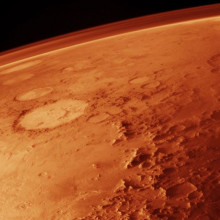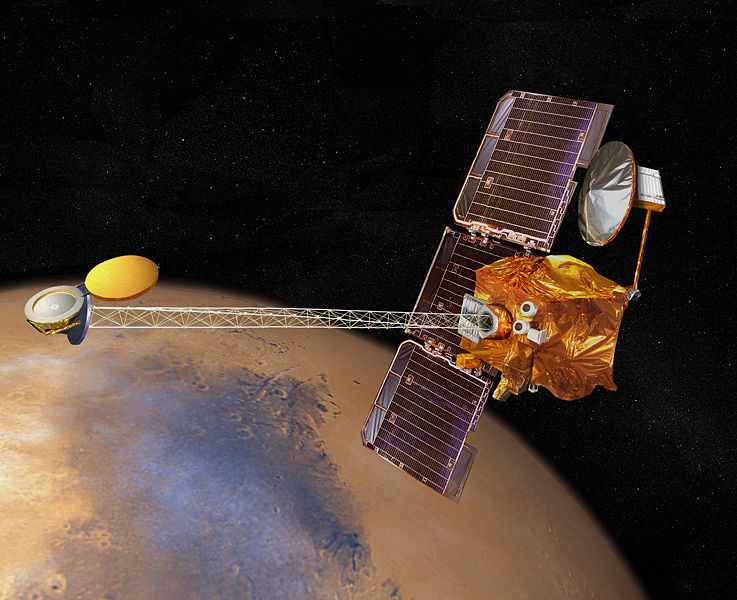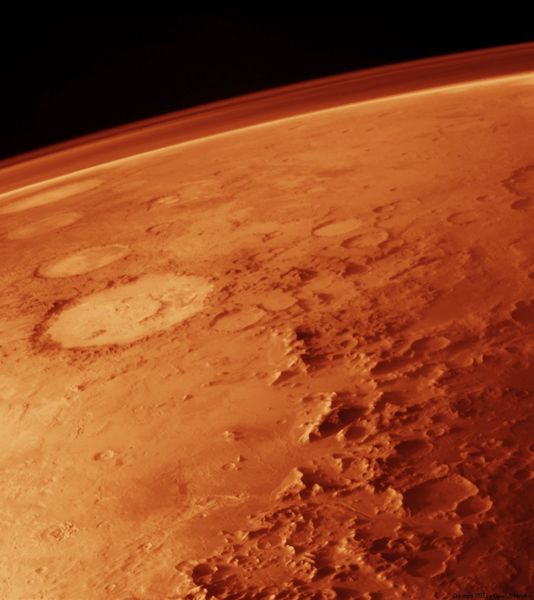As the Naked Scientists were all tied up in SciFest Africa this week, there's no roundup of this week's science news. However, this was an exceptionally important week in science history, and Sarah Castor Perry celebrates the launch of the Odyssey mission in 2001...
In this episode

00:34 - This Week in Science History - The Mars Odyssey Mission
This Week in Science History - The Mars Odyssey Mission
Sarah Castor-Perry
On the 7th of April 2001, the Mars Odyssey spacecraft was launched to orbit and survey Mars, with 4 main aims - to search for the presence of water, to characterise the climate and the geology and to determine the radiation levels and if a human mission there would be safe. It reached the planet in October 2001 and started officially taking measurements in February 2002. Whilst not designed to directly look for life on Mars, the instruments would determine whether conditions are now or were at some time in the past suitable for life to arise.
 The race to launch a successful mission to Mars between the Russians and Americans led to 26 missions being launched between 1960 and 1990. The first successful mission was the American Mariner 4 that made a successful flyby in 1964, sending back the first close up pictures of the planet, and the first successful lander was the American Viking 1 in 1976, that sent back the first detailed images of the planet surface, as well as analysing the soil and wind speed.
The race to launch a successful mission to Mars between the Russians and Americans led to 26 missions being launched between 1960 and 1990. The first successful mission was the American Mariner 4 that made a successful flyby in 1964, sending back the first close up pictures of the planet, and the first successful lander was the American Viking 1 in 1976, that sent back the first detailed images of the planet surface, as well as analysing the soil and wind speed.
On board Odyssey are 3 main instruments - THEMIS, a Thermal Emission Imaging System that detects visible and infrared light emitted from the planet's surface, a Gamma Ray Spectrometer designed to detect the presence of gases, minerals and other chemicals, and MARIE, the Mars Radiation Experiment, that was to check levels of radiation on the planet to assess danger to astronauts should a manned mission ever go to Mars.
 In December 2001, much earlier than expected, THEMIS found large deposits of hydrogen at the South Pole of Mars - good evidence of water ice. Later, after the Spring thaw of the Carbon Dioxide dry ice at the North pole, they also found an even larger deposit of water ice there.
In December 2001, much earlier than expected, THEMIS found large deposits of hydrogen at the South Pole of Mars - good evidence of water ice. Later, after the Spring thaw of the Carbon Dioxide dry ice at the North pole, they also found an even larger deposit of water ice there.
It has also been used as a relay for the Mars landers Spirit, Opportunity and Phoenix - helping to send back information from them to NASA and even helped to choose a landing site for the Phoenix lander in 2008, by monitoring surface and atmospheric conditions. Unfortunately, MARIE, the radiation detector on Odyssey, was destroyed by a solar flare in 2003, but it had managed to send back enough information to suggest that a manned mission to Mars would be safe.
Both orbiting and landing missions to Mars have continued in the 21st Century, and in 2008, the Phoenix lander confirmed the presence of water ice just as Odyssey had predicted.
 The Odyssey mission has been so successful, and the machinery and instruments are still in really good condition, so the mission has been extended again until 2010. In September 2008, the thrusters on the spacecraft were activated to begin to move Odyssey to a new orbital position to increase the infrared analyser sensitivity. It could potentially run until 2015, when its propellant is expected to run out.
The Odyssey mission has been so successful, and the machinery and instruments are still in really good condition, so the mission has been extended again until 2010. In September 2008, the thrusters on the spacecraft were activated to begin to move Odyssey to a new orbital position to increase the infrared analyser sensitivity. It could potentially run until 2015, when its propellant is expected to run out.
Since the Odyssey mission, NASA has discovered evidence of seasonal methane on Mars. This methane has two potential sources - volcanic activity or underground life.
The idea that Mars might support life has been hugely popular in fiction, with examples like the aliens in Orson Welles' War of the Worlds, so the real life search for Martian life has really captured the public imagination...
Related Content
- Previous The History of Medicine
- Next SciFest Africa









Comments
Add a comment